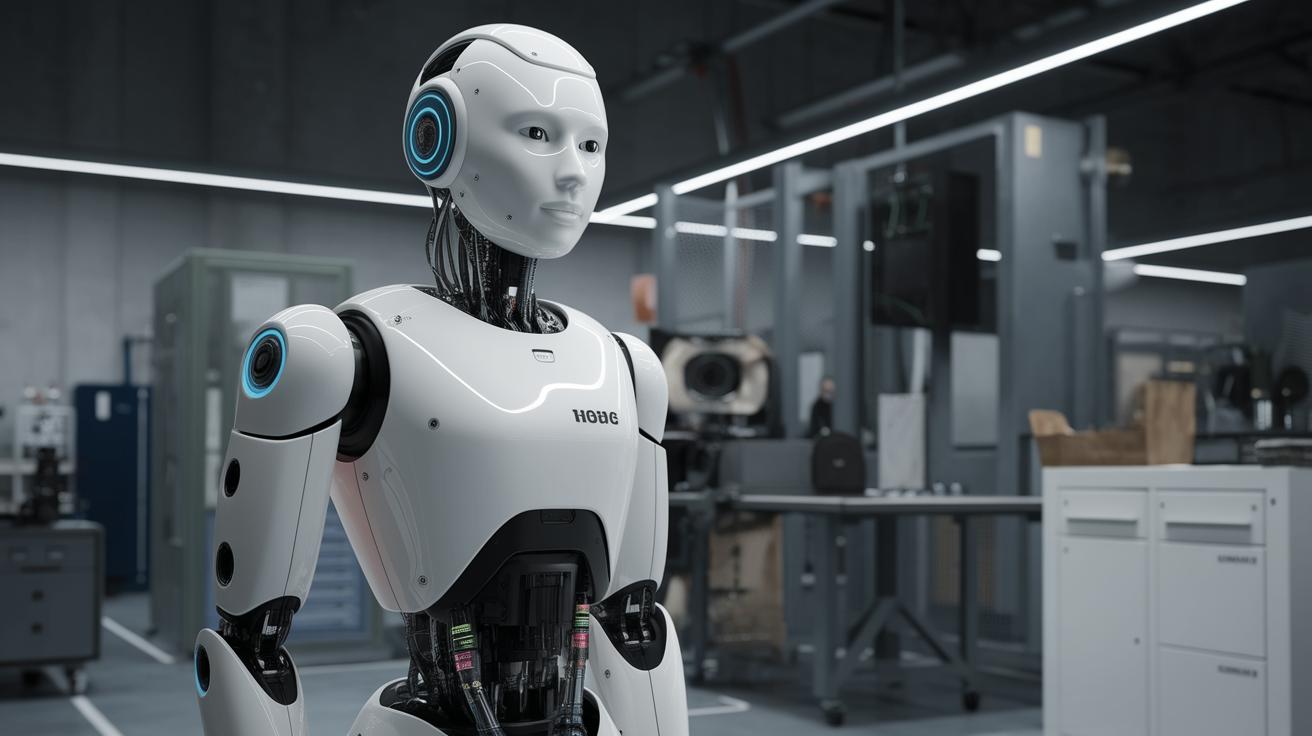Introduction
Robots, once a figment of science fiction, are now becoming integral in solving one of humanity’s pressing issues: waste management. These machines are increasingly being harnessed to address the complexities of sorting, recycling, and managing waste more efficiently. In this blog post, we delve into the historical backdrop of robotics in waste management, explore key concepts, and assess their benefits and current applications. We’ll present real-world examples, discuss contemporary trends, address challenges, and sketch a future outlook that envisions a cleaner, more sustainable planet. This comprehensive exploration will offer insights into the dynamic intersection of technology and environmental stewardship.
Historical Background
The use of robots in waste management dates back several decades. Early applications of robotics in this sector focused primarily on hazardous waste handling. The challenge was to minimize human exposure to dangerous materials, a task well-suited for robots given their ability to operate in conditions unsafe for humans. Over time, advancements in robotics, artificial intelligence (AI), and machine learning have broadened the scope of their utility beyond hazardous waste handling.
In the late 20th century, industries began experimenting with automation in recycling processes, though initial adaptations were limited due to high costs and technological constraints. However, the turn of the 21st century saw an increase in the deployment of robotics technology as costs decreased and capabilities expanded. This historical evolution set the stage for the current integration of sophisticated robotic systems in waste sorting and recycling operations worldwide.
Key Concepts and Definitions
To understand the role of robots in waste management, it’s important to define several key concepts.
Robotics
refers to the field of engineering dedicated to the design, construction, and operation of robots. In the context of waste management, robots can be mobile or stationary, equipped with sensors to identify, sort, and process various materials.
Artificial Intelligence (AI)
plays a crucial role by enabling robots to make decisions based on data analysis. Through machine learning algorithms, AI systems can improve sorting accuracy over time, learning to identify different types of waste more efficiently.
Automation
, in this context, refers to the automatic control of machinery processes, which significantly reduces the need for human intervention.
Main Discussion Points
NASA Rover Uncovers Biggest Clue Yet That Mars Could Have Supported Life
While this topic may seem unrelated to waste management, the technological advancements made in robotics for space exploration have provided insights used in mundane terrestrial applications, including waste management. NASA’s Mars rovers, equipped with advanced sensors and AI capabilities to navigate and analyze extraterrestrial terrain, have set benchmarks for robotic precision and adaptability. These technologies have directly influenced the design of waste management robots, which require similar capabilities to identify and sort materials in intricate sorting environments.
Much like a NASA rover analyzing Martian soil, waste sorting robots use sophisticated algorithms and sensors to differentiate between recyclable materials and true waste. The high level of autonomy required by space robots to operate in remote, inhospitable environments translates to efficiency and effectiveness in the fast-paced setting of waste handling facilities.
The benefits of using robotics in waste sorting and recycling
One of the most significant benefits of robotics in waste sorting is the improvement of efficiency and accuracy in recycling processes. Robots utilize sophisticated sensors and machine learning algorithms to quickly identify different types of materials, thus enhancing the speed of sorting processes. This increased efficiency not only saves time but also reduces operational costs associated with manual sorting.
Additionally, the use of robots reduces the need for human workers to be exposed to potentially hazardous environments. By handling the more dangerous aspects of waste sorting, such as dealing with sharp objects or toxic materials, robots improve workplace safety and reduce the risk of work-related injuries. Furthermore, automation enables 24/7 operation, increasing the overall throughput of waste management facilities.
How robotics are being implemented in waste sorting and recycling
Robots are currently being integrated into waste management systems in a variety of ways. Automated machines are equipped with advanced AI to handle tedious tasks like sorting recyclable materials. Using cameras and complex algorithms, these robots can differentiate between plastics, metals, and other materials with high accuracy.
In addition to sorting, robotics are used in tasks such as shredding, compacting, and baling waste materials. By automating these processes, waste management facilities can improve their operational efficiency, decrease costs, and ultimately divert more waste from landfills. With the continued improvement and availability of robotics technology, the adoption of such systems is expected to rise rapidly.
Potential challenges and limitations of robotics in waste sorting and recycling
Despite the numerous benefits, there are several challenges to the widespread implementation of robotics in waste management. One major issue is cost. The initial investment required for robotic systems can be significant, which may be prohibitive for smaller waste management companies or municipalities.
Moreover, there are limitations regarding the types of materials that current robotic systems can handle effectively. Complex items such as bundled materials or contaminated items can pose significant challenges. Also, maintenance and technical support for these sophisticated systems require specialized skills, adding another layer of complexity to their integration.
Case Studies or Examples
Provide real-world examples of robotics in waste sorting and recycling
AMP Robotics, an innovator in the field, uses AI-driven robots that can identify, sort, and process different types of waste with a remarkably high degree of accuracy. Their technology is being employed in various recycling facilities across the United States, demonstrating significant operational improvements in speed and waste separation efficiency.
Another notable example is ZenRobotics, based in Finland, which developed a robotic waste sorting system capable of separating waste streams at an unheard-of pace. Their technology can simultaneously sort multiple types of materials, positioning themselves as leaders in autonomous waste solutions.
Current Trends or Developments
The landscape for robotics in waste management is rapidly evolving. AI and machine learning technologies continue to advance, enabling better recognition and sorting capabilities. Additionally, robotics innovations are focusing on increasing energy efficiency, further promoting sustainability within the sector.
A new trend is the development of collaborative robots or “cobots,” designed to work alongside human workers, thus leveraging the strengths of both human intelligence and machine accuracy. As AI algorithms improve and costs decrease, the integration of robotics into waste management will likely become a staple in most operations worldwide.
Challenges or Controversies
While robotics promises numerous benefits, its integration into waste management comes with challenges and controversies. One significant concern is the potential displacement of human jobs. As robots take over tasks traditionally done by humans, there is a growing anxiety over job security in the waste management sector.
Moreover, ethical considerations around AI-powered decision-making processes in waste sorting need to be addressed. As these systems continue to evolve, there must be frameworks and regulations to govern their operation, ensuring they prioritize human safety and environmental sustainability.
Future Outlook
Looking ahead, the future prospects of robotics in waste management are promising. Technological advancements are likely to continue reducing costs and enhancing capabilities, leading to broader adoption across the industry. Innovations in AI and machine learning will further refine sorting and recycling processes, resulting in higher material recovery rates and reduced landfill contributions.
Governments and industries worldwide are expected to increasingly recognize robotics as a viable solution to the growing waste crisis. Collaborations between robotics companies, policymakers, and environmental organizations will be crucial in shaping a sustainable future where robots play a key role in achieving a zero-waste society.
Future Prospects
| Section | Summary |
|---|---|
| Introduction | Overview of how robotics are transforming waste management for a sustainable future. |
| Historical Background | Evolution of robotics in waste management from hazardous handling to current applications. |
| Key Concepts and Definitions | Explanation of robotics, AI, and automation within the context of waste management. |
| Main Discussion Points | Examination of key topics including benefits, implementation, challenges, and space exploration influences. |
| Case Studies or Examples | Real-world examples of companies leading the integration of robotics in waste sorting. |
| Current Trends or Developments | Overview of emerging trends and technological advancements in the sector. |
| Challenges or Controversies | Discussion on potential job displacement and ethical considerations of robotics. |
| Future Outlook | Projection of how robotics will shape future waste management strategies. |


